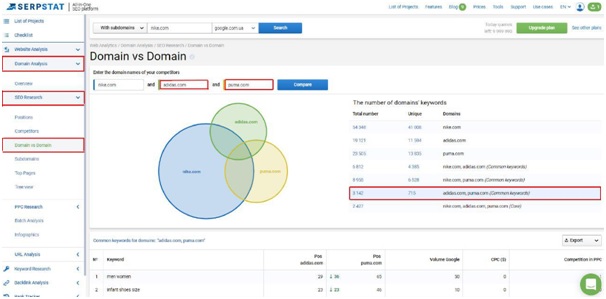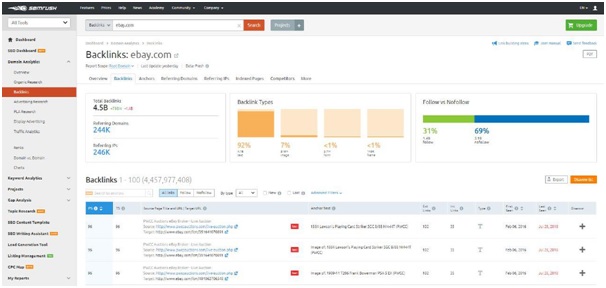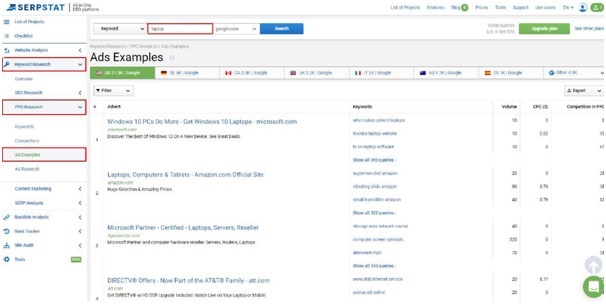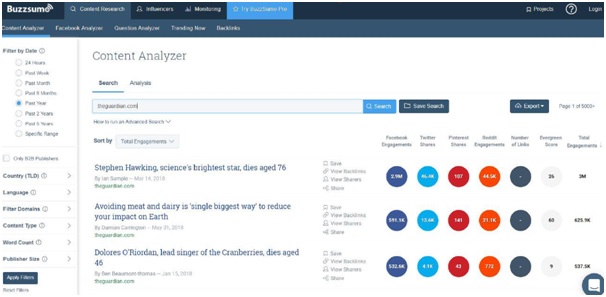Inna Yatsyna
Inna Yatsyna - a content marketing specialist at Serpstat, an all-in-one SEO platform. She's fond of writing useful articles and helping people. Also, Inna is a passionate lover of travelling, growing home flowers, and big dogs.
The following article will help both new websites and those which are mature enough to find new ways of gaining popularity on the Internet.
If you want your business to be commercially viable, you should be online: when people look for something, they use search engines. The higher your website is in the search results, the more chances a user will choose it. To reach the top, you need to know how to ‘overtake’ your competitors.
In this post, I’ll talk about the stage of site optimization some people neglect. As a result, they lose the traffic they could get. The main aim of a competitive analysis is to collect and review information about rival companies. This will give you a clue to making your product, service, or marketing stand out.
The following article will help new websites and those mature enough to find new ways of gaining popularity on the Internet.
Why do you need a competitor analysis?
To be ahead of your rivals, you should know their strengths and weaknesses. Due to this, you’ll be able to enhance your ideas and create something entirely new. It’s an essential process in SEO.
After conducting competitor analysis, you’ll certainly not:
But you will:
Of course, before getting to this analysis, you should find out who you compete with.
Who are your search competitors?
You may think that you know who your closest competitors are. But it’s easy to be mistaken. Market players are replacing each other extremely fast, which may count against you if you aren’t observing the current situation.
New companies appear; some leaders leave the top or even stop functioning. These changes should influence your further actions.
Some people use Google search or interview their sales department looking for rival firms. If there’s a wide range of categories on your website, it’s quite challenging to collect accurate information. The quickest way to do it is to use SEO tools like Serpstat, Ahrefs, and SEMrush.
SE Ranking's competitor research tool works better when finding your competitors.
Recommended: Top List of Best Website Audit & SEO Tools That Every Marketer Should Use
Let’s look at how Serpstat copes with this task. All you need is to enter the URL of your site and follow the pattern shown in the picture below.
The service builds up the list of search competitors taking into consideration keywords on your website and the competing ones used in SEO. At this stage, you can see your common semantics and those words your domain misses.
5 Keys to Efficient Analysis
Knowing who the rival firms are — is a good start, but it’s not enough. Here are the further steps you should undertake to get a great result:
Step by step, you’ll come close to a perfect business strategy.
To begin with, define the semantics your competitors use to rank at the top of search engines. Surely, you’ll find out that there are lots of opportunities for you to widen the keyword pool of your website.
As you’re already at the Competitors page, choose the site with the highest Relevance and click on the number in the Missing Keywords column. Try to identify the words relevant to your content and think about whether you can add them to your semantics.

It’s much more convenient and productive to compare your site with two other close competitors at once. Before doing this, find the sites with the closest subjects to your one. Then go to the tab Domain vs. Domain and enter the chosen domains (or click on those from the list below).
You get the whole information about the common and missing words of all three domains. If you click on the area where your competitors intersect, you’ll see the list of keywords you may use.
Link building as a part of SEO is a challenging process, while some sites purchase a huge amount of backlinks with a risk of being blocked by search engines.
Despite Google being told to reduce the backlinks impact on a website’s ranking, SEO specialists still talk about the importance of external backlinks. Indeed, some competitive niches almost don’t allow you to improve your site’s search visibility without a proper backlinks profile.

The answer to where you could place your links may be easily found during competitors’ backlinks analysis. I highly recommend you use SEO tools for this purpose.
All three services I mentioned can analyze sites’ backlinks profiles. I’ll show you how SEMrush does it: enter the domain of a rival you want to analyze in an input field and go to Backlinks.
You don’t need all the information given to you on this page for competitive analysis. The data worth paying attention to:
If you have the same audience as your competitor, you’ll find link opportunities for your backlinks profile.
A meta tag is a text snippet that describes page’s content. It’s the first thing users look at deciding whether they should go to your page. If you enter one of your keywords in the search field, you’ll see many examples of your competitors’ meta tags.

You can also use SEO tools for more information on tags. For example, Serpstat will provide you with data about meta tags used in adverts. Go to Keyword Research, enter the keyword and click on PPC Research > Ad Example.
Analyzing competitors’ content, you’ll develop ideas for improving the information they give to create your topics.
This part of the competitive analysis requires your efforts: it’s better to check competitors’ content by yourself. What are the features of high-quality content?
One more significant factor is social media sharing statistics. The more useful the content is, the more shared it becomes. You can use Buzzsumo to determine which of your competitors’ posts are the most popular.

Knowing these data, you’ll decide the topics your readers are interested in.
Once you’ve learned how to analyze your competitor’s sites, you’ll be able to follow the same pattern auditing your website.
Thanks to analyzing your competitors' site structure, you’ll get ideas for new sections for your site.
You’ll see which pages your competitors consider important if you look at the hierarchy they set up on the site. Think about why they pay so much attention to the specific pages. Maybe, search engines index them better due to such a structure?
Remember to examine whether your competitor’s site has a mobile version — nowadays, people surf the Internet mostly using their smartphones. If you still don’t have it, what are you waiting for?
It’s easier to realize what you should aim at when you know which sources drive you the best traffic.
To know which channels have the potential for you, find the information about the traffic sources of your competitors.
SimilarWeb will help you with it: you can follow the link or download its browser add-on. The service provides information about competitors’ traffic and shows where this traffic comes from.
There are three main things you should remember after reading this article:
You’ll also receive some of our best posts today

Inna Yatsyna - a content marketing specialist at Serpstat, an all-in-one SEO platform. She's fond of writing useful articles and helping people. Also, Inna is a passionate lover of travelling, growing home flowers, and big dogs.
Search engine optimization is a very important part of...
While it’s true that beauty is only skin deep,...

User reviews are a game-changer for e-commerce. Consumers rely heavily o...
Don’t miss the new articles!